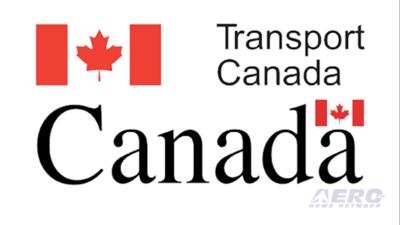Sat, Nov 28, 2020
The Government of Canada Has 'Modernized And Strengthened' ELT Regulations
The Minister of Transport has announced changes to the Canadian Aviation Regulations to mandate the use of digital emergency locator transmitters (ELTs) onboard aircraft flying in Canada.

The new, strengthened requirements will:
- improve passenger safety by increasing the likelihood that the distress signals will be received;
- enhance the efficiency of search and rescue operations by providing rapid, reliable and accurate position information to search and rescue services;
- reduce false alarms and the unnecessary deployment of search and rescue resources;
- harmonize emergency locator transmitter requirements with international standards; and,
- respond to a recommendation from the Transportation Safety Board of Canada, which called for the installation of digital emergency locator transmitters on all Canadian-registered aircraft and foreign aircraft operating in Canada.
Under the previous regulations, Canadian aircraft were required to be equipped with an analog ELT using the 121.5 MHz frequency. The regulatory changes announced today will require all Canadian aircraft to be equipped with a digital ELT capable of broadcasting simultaneously on frequencies of 406 MHz and 121.5 MHz, with some exceptions.
The MoT claims that using digital ELTs will reduce risk to human life and health as these devices provide more rapid, reliable and accurate position information to help search and rescue services identify and locate an aircraft in distress in a timely manner. Distress signals are received by a global satellite system that is monitored by search and rescue services, thereby increasing the chances of a successful rescue in the event of a downed aircraft.
The amendments apply to Canadian and foreign-registered aircraft operated in Canada, with the exception of gliders, balloons, airships, ultra-light aeroplanes and gyroplanes.
Commercial air operators, foreign aircraft and private operators have one year after the final publication of the amended regulations in Canada Gazette, Part II on November 25, 2020, to implement the amendments while recreational operators have five years to comply.
More News
“...no entity, whether a division of government or a private company or corporation, may use information broadcast or collected by automatic dependent surveillance-broadcast >[...]
Growth And Fleet Replacements On The Way International Airlines Group, a joint holding company between British and Spanish air carriers, announced it has ordered up to 76 new Boein>[...]
Expert Analysts Scrutinized the FAA’s Oversight of ATC Organization In a move that appears somewhat mistimed (at best…tone-deaf at worst), the Federal Aviation Adminis>[...]
Community Continues to Push Back Against ADS-B-Facilitated Landing Fees On May 8, a bill to limit frivolous use of ADS-B tracking data was signed into law by Montana Governor Greg >[...]
Duffy Shares Plans to Scale Back Flights at Newark Liberty International After a ‘telecommunications issue’ with Philadelphia TRACON brought yet another string of delay>[...]
 Aero-News: Quote of the Day (05.13.25)
Aero-News: Quote of the Day (05.13.25) IAG Orders 76 Boeing, Airbus Airliners
IAG Orders 76 Boeing, Airbus Airliners FAA Shuts Down ATC Oversight Review Amid Scrutiny
FAA Shuts Down ATC Oversight Review Amid Scrutiny Montanas ADS-B Privacy Bill Signed Into Law
Montanas ADS-B Privacy Bill Signed Into Law Newark Falls Victim to More Equipment Outages
Newark Falls Victim to More Equipment Outages



